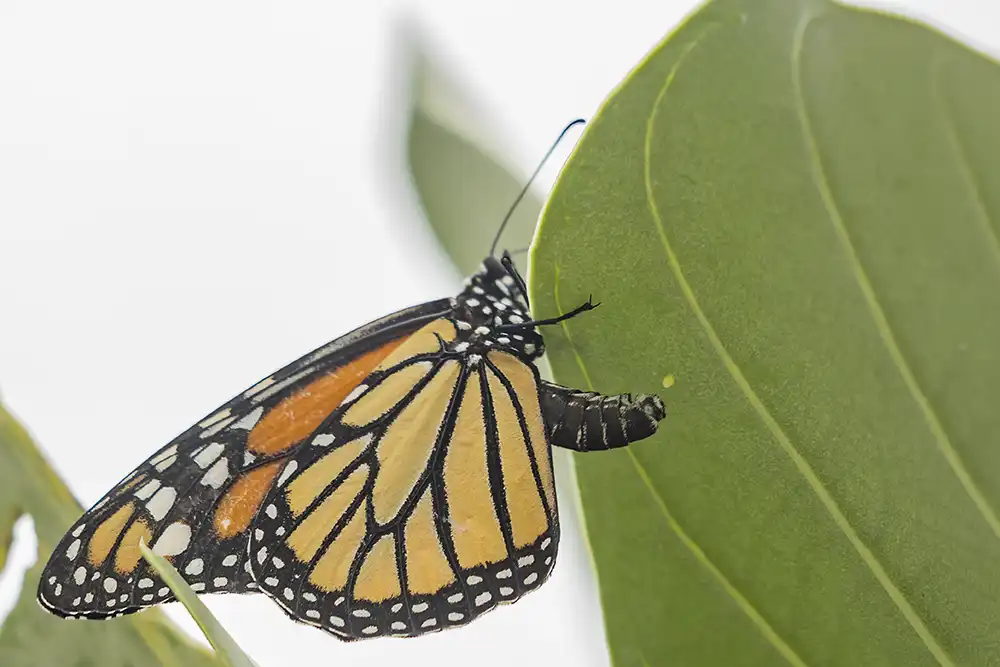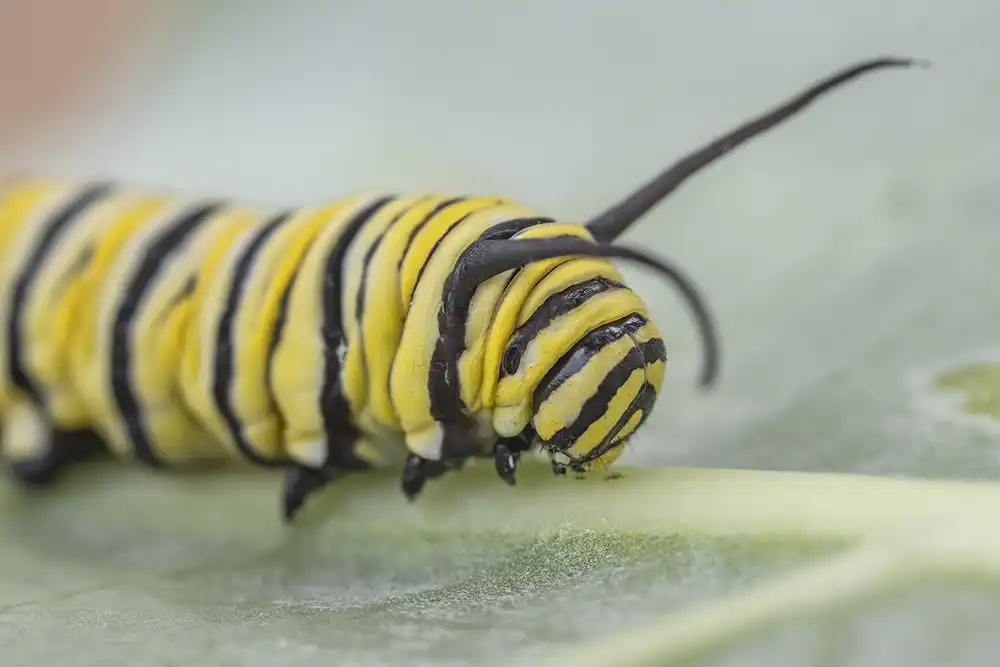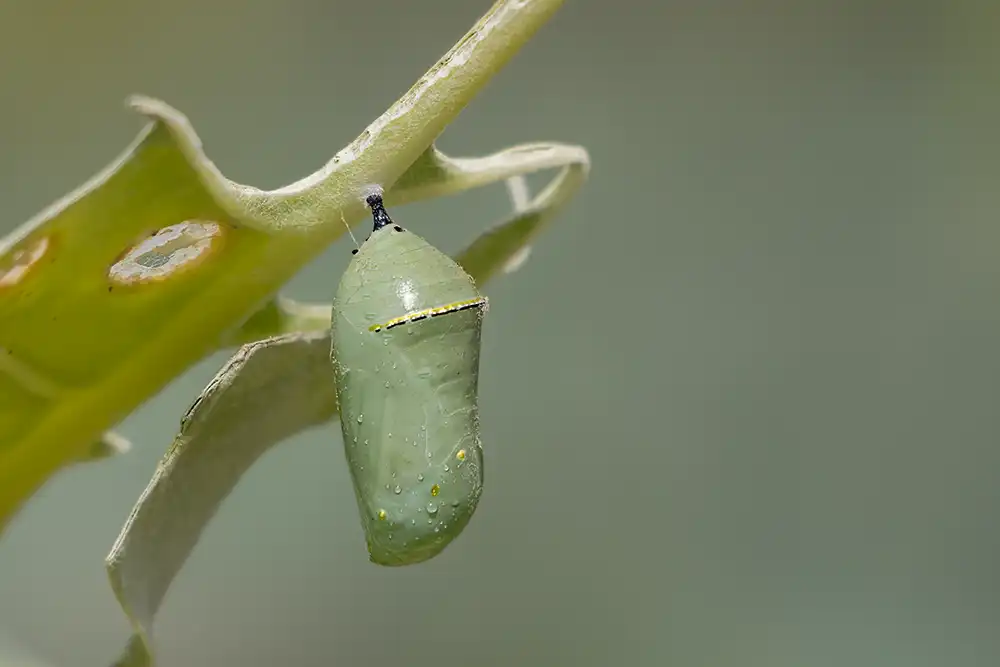The monarch butterfly (Danaus plexippus) is a large orange butterfly with black-edged wings and white spots, visible almost year-round on Bonaire. In this photo blog, you can admire the remarkable transformation of the monarch butterfly. Not only is the butterfly highly photogenic, but the caterpillar and even the cocoon are also a visual delight! Appreciate the many forms of this extraordinary insect! Also, read our blog about other Butterflies on Bonaire.
Sharing Island Love
Thank you for your interest in our beautiful island in the Caribbean! We love sharing our passion for Bonaire with everyone — locals, visitors, and of course, with our guests during Our tours. Curious how we do that? You can find all the details in Sharing Island Love.
With Island Love,![]()
Are you, like us, passionate about photography? Then book a photography tour with us! We’re snap-happy on all our tours. Afterwards, we share the best shots with our guests — a beautiful keepsake from your Bonaire adventure!
Onderwerpen
Text continues below…


Extraordinary Migratory Butterfly
The monarch butterfly is native to North and South America. The butterfly is world-famous for its miraculous migratory behavior. They overwinter in the Reserva de Biosfera de la Mariposa in Mexico. In the spring, the butterflies migrate as far as 4500 kilometers northward. This distance is too great to cover in a single butterfly’s lifespan. Because the species reproduces quickly, the distance is divided over several generations.
The monarch butterfly is native to North and South America. The butterfly is world-famous for its miraculous migratory behavior. They overwinter in the reserve in Mexico. In the spring, the butterflies migrate as far as 4500 kilometers (3000 miles) northward. This distance is too great to cover in a single butterfly’s lifespan. Because the species reproduces quickly, the distance is divided over several generations.
Giant Milkweed
Once a female monarch butterfly has mated, she seeks out a Giant Milkweed (katunbòm in Papiamentu) to deposit her eggs. The Giant Milkweed is a true pioneer. It is the first plant to appear in areas where the soil has been disturbed. The milkweed is easily recognizable by its large, grayish-green leaves, purple flowers, and distinctive fruits. These air-filled fruits contain a silky fluff, giving the plant its name in Papiamentu: “Cotton bomb”.


The egg
During the rainy season and the period thereafter, monarch butterflies are frequently found near the Giant Milkweed. The females carefully attach their eggs to the hairy underside of the leaves, laying hundreds of eggs per butterfly. The teardrop-shaped eggs are yellow in color and only a millimeter in size.

The caterpillar
From the egg emerges a hungry caterpillar. The mother butterfly intentionally placed the egg on a fresh leaf so that the caterpillar can start eating immediately. The Giant Milkweed is exclusively consumed by monarch caterpillars because the leaves contain a mild toxin. The caterpillars take advantage of this by carefully storing the toxins from the leaves, making themselves increasingly toxic. And they make it clear! The monarch caterpillar is distinctly black, white, and yellow striped. If you’re on Bonaire and want to photograph these beautiful caterpillars yourself, now you know where to find them!

The small caterpillars grow rapidly. Their appearance doesn’t change much during growth, except that the protrusions at the front and rear of the body become more pronounced. These tentacles serve to confuse birds. Birds tend to start eating at the head, but due to the appendages, this caterpillar appears to have two heads!

About two weeks and five molts later, the caterpillar is fully grown. It is now 45 millimeters (1.75 inches) long and three thousand times heavier than the egg it hatched from. The caterpillar is ready to pupate.
Text continues below…

The chrysalis
The fully grown caterpillar finds a sheltered spot underneath a leaf. There, it suspends itself upside down from a small tuft of silk. After a few days, it undergoes a final molt, revealing a beautiful chrysalis. The first wondrous metamorphosis!

The acorn-shaped chrysalis of the monarch butterfly is green in color and adorned with a golden line at the top and golden specks. It’s a true little work of art!

The Butterfly
After about twelve days, the chrysalis turns black, and then it bursts open. The monarch butterfly emerges. The wings still stick together like clumps against the butterfly’s body. In a few hours, the butterfly unfolds its wings by pumping bodily fluids into them. The transformation is then complete.

For the next few months, the life of the monarch butterfly will revolve around eating and reproducing. The butterflies fly from flower to flower, using their long proboscis to sip nectar. They are not picky about the flowers they feed on and can be found on various blooms.

Toxic
The toxins absorbed by the caterpillar also protect the chrysalis and the butterfly. Birds that have eaten a butterfly quickly regurgitate it. After that, they avoid consuming such an orange butterfly. Other butterflies on Bonaire resemble the monarch butterfly, and due to fear of the toxins, they are left undisturbed, even though they are not poisonous!

On a Photography Tour with HopiBonaire
If you’re having trouble spotting butterflies or need useful tips for capturing these colorful insects, HopiBonaire is here to ensure you get them beautifully in front of your lens during a custom-made photography tour.
For other branches of nature photography, you’re in the right place with us! At HopiBonaire, we customize every photo tour because every photographer has unique preferences. Our approach is always relaxed because we understand that rushing during photography is not desirable. Capturing beautiful photos takes time and patience. Book a photography tour and discover Bonaire through the lens of your camera!
Text continues below…

Not much of a photographer? Feel free to explore our extensive range of other tours.
Read more?












